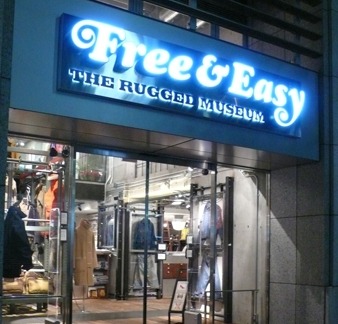
Although, technically, legal trade between the United States and Japan has been going on since the 1850s, and Americans and Europeans can order from each others’ webstores as easily as they can order from a store two towns over, Japan’s online retail economy still confounds many an eager shopper. The disconnect is part language barrier and partly technological–many Japanese sites are just not set up to accommodate global e-sales. English speakers are privileged in that most European stores have staff who speak English, or can translate quickly via online tools like Google Translate. English/Japanese translation tools are not nearly as reliable, and sometimes no amount of good will and intentions on the part of both seller and buyer can overcome the communications breakdown. Likewise, even if you can navigate Japanese shopping sites, you often can’t register with or ship to non-Japan addresses.
The state of affairs is even more frustrating because Japan-based brands just make so much cool stuff, and because Japan’s big retailers, like Beams and United Arrows, have the buying power to carry exclusive goods from many brands that you’ll just never see elsewhere. (For instance, Danner still makes Japan-exclusive boots.) And Japan’s secondary market (Yahoo Auctions is analogous to ebay) is full of new and secondhand goods at relatively reasonable prices. Compared to U.S. stores and ebay, the Japanese market is particularly rich in niche and cult brands like Buzz Rickson, Visvim, Undercover, Jun Hashimoto, and Nepenthes/Needles.
How to Use a Proxy or Buying Service
Brad at Harajuju has put together a really solid guide on buying stuff from Japan, the bottom line of which is that your best bet is proxy services; that is, paying someone in Japan to shop for you and then ship goods to you. Brad’s guide has a helpful breakdown of the steps and costs of purchasing through a proxy. He recommends using FromJapan; SutoCorp also has a good reputation. I’ve personally also used the smaller scale StylisticsSpace. (Harajuju and Put This On readers may or may not be shopping for the same stuff, but the process is the same.)
Tips
Some things to remember in addition to Brad’s advice:
- Be realistic about an item’s marked price vs. what it will cost you. Transaction fees, shipping, and proxy commission all add up.
- Right now, 1USD is approximately 100JPY, a relatively favorable exchange rate for U.S. shoppers.
- For Japanese brands, clothing generally runs smaller than U.S.-market clothing.
- Japan isn’t Nordstrom. Some shops and proxies accommodate returns, but when you order something through a proxy, chances are you’re stuck with it. Consider fees and shipping, at least, as sunk costs, and be prepared for some trial and error. In my experience, if a store makes a mistake (for instance, ships the wrong item), they’ll work with you to fix the mistake.
- For most U.S.-based brands, you’re better off buying domestically. On average, American-made goods will be more expensive in Japan than in the United States (this goes for European goods, as well). Japan is not a good place to look for discount Alden shoes.
- Transactions take time. If you want a pair of Visvim sneakers on Yahoo Auctions and the auction ends in an hour, it’s not likely you’ll be able to coordinate with a proxy service in time.
- Depending on what you order and how much it costs, you may have to pay duty (import tax) on top of everything else. It’s illegal to misrepresent the value of the goods you order in order to avoid paying taxes.
- Rakuten, which lists some stores’ inventories as well as one-off (often used) items, has made it easier to order for buyers outside of Japan. Some Rakuten merchants will work with you directly (i.e., no proxy); Rakuten even offers occasional specials like free international shipping from select merchants.
- The market opens up a little more every year; Japanese brands are more widely available than they used to be. Self Edge carries a lot of great Japanese brands. Kamakura has a shop in New York and a webstore; a lot of stores sell the Beams house line Beams Plus now; Danner is more liberal with their Japan designs. Don’t use a proxy if you don’t have to.
This may all sound discouraging, but I’ve had many good experiences shopping from Japan, both through proxies and directly through Rakuten. It may seem perverse in a make-everything-easy, customer-is-always-right shopping culture, but it’s satisfying to successfully navigate the process–the extra effort is emotional investment in the item you purchase, whatever it may be.
-Pete









